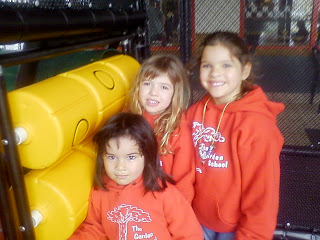Study Links Fitness and Academics
From Teacher Magazine:
This is no surprise. The better you feel the more you will do. The better health you are in the more you will accomplish. Even the laziest non-achieving personality…
AUSTIN, Texas (AP) — Physically fit students in Texas are more likely to do well on the state’s standardized test and have better attendance, according to a study released Monday.
The study, which reviewed results of fitness assessments of students across Texas, also found that fit students are less likely to have disciplinary problems.
“Now, we have hard evidence that there is a link between fitness and academic success,” said state Sen. Jane Nelson, R-Flower Mound, who pushed the 2007 legislation calling for a renewed emphasis on physical fitness. “We need to continue our efforts to decrease these trends as if lives depend on it, because they truly do.”
The two-year old law requires annual fitness assessments for public school students beginning in third grade. The results were reported to the Texas Education Agency and the Cooper Institute of Dallas analyzed them.
The Cooper Institute found that cardiovascular health, measured by a walking/running test, had a higher correlation to school success than the students’ body mass index.
“Increased exercise improves cardiovascular health and that helps the brain function more efficiently and enhances its ability to learn,” said aerobics pioneer Dr. Kenneth Cooper, founder of the Cooper Institute.
The results of the first fitness assessment, which measured students in the 2007-08 school year, found that Texas students were startlingly unhealthy and their fitness levels declined sharply through 12th grade, where less than 10 percent of students passed the fitness test.
Students will be assessed again this spring.
The Fitnessgram test includes a skin fold test, curl-ups and push-ups. Another exercise tests flexibility, with students sitting with one bent leg and one straight leg and then reaching forward as far as they can.
In the trunk lift, which tests trunk extensor strength, students lie on their stomachs and raise their upper body while the teacher measures the distance between the students’ chins and the floor. The last test is called the pacer, a paced 20-meter run that increases in intensity as time progresses.
The results are recorded on a report card that allows parents and teachers to identify the physical strengths and weaknesses of each student. Results, unattached to students’ names, also are submitted to the TEA.
“Our state and nation are struggling with obesity, thanks to the combination of increasingly sedentary lifestyles and the declining quality of diets,” said Gov. Rick Perry. “We owe it to our children to take the appropriate steps to encourage fitness, steps that are made clearer by the information contained in this first round of testing. I am confident we are on our way to making a difference that will improve and even save lives.”











